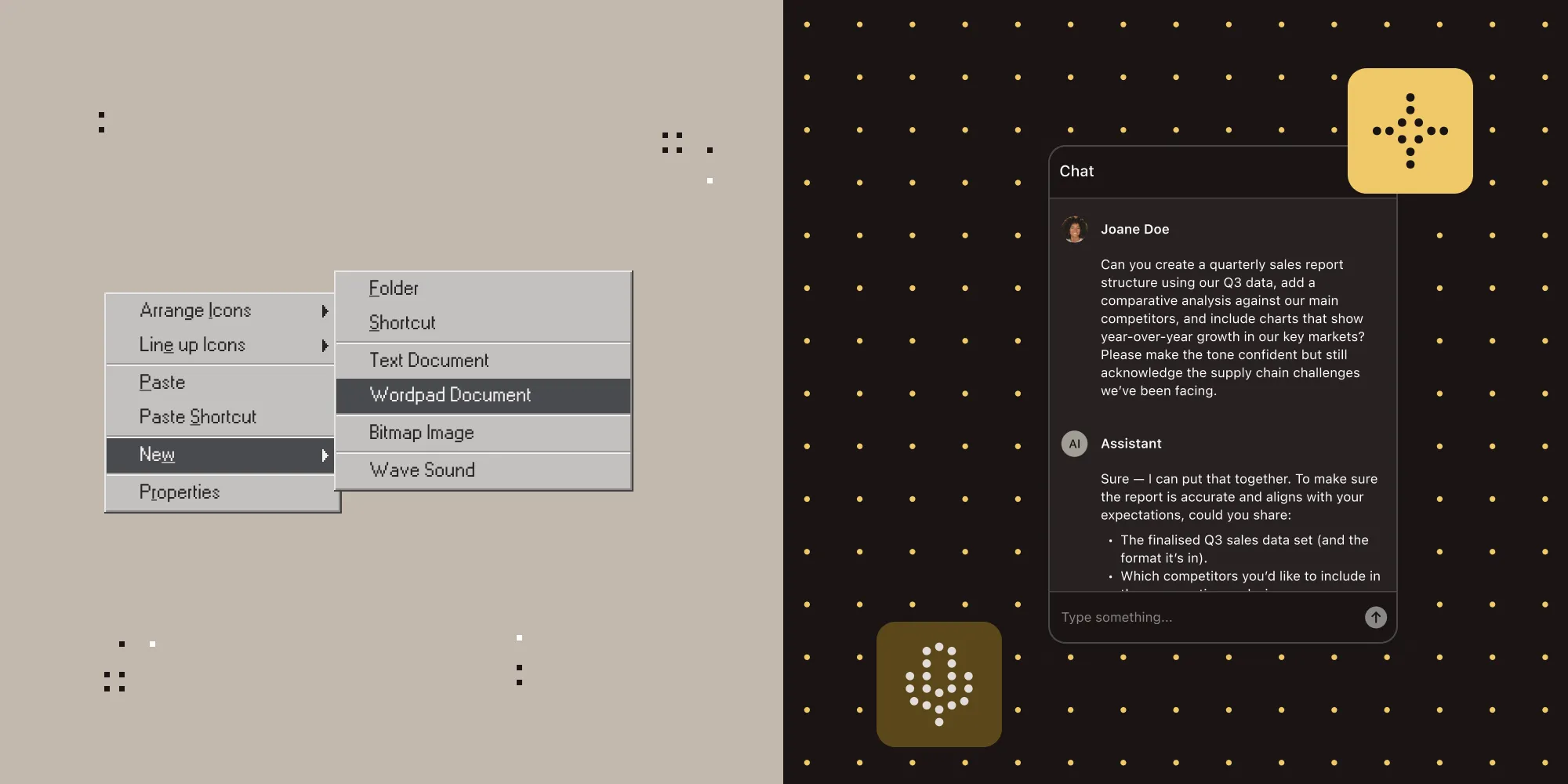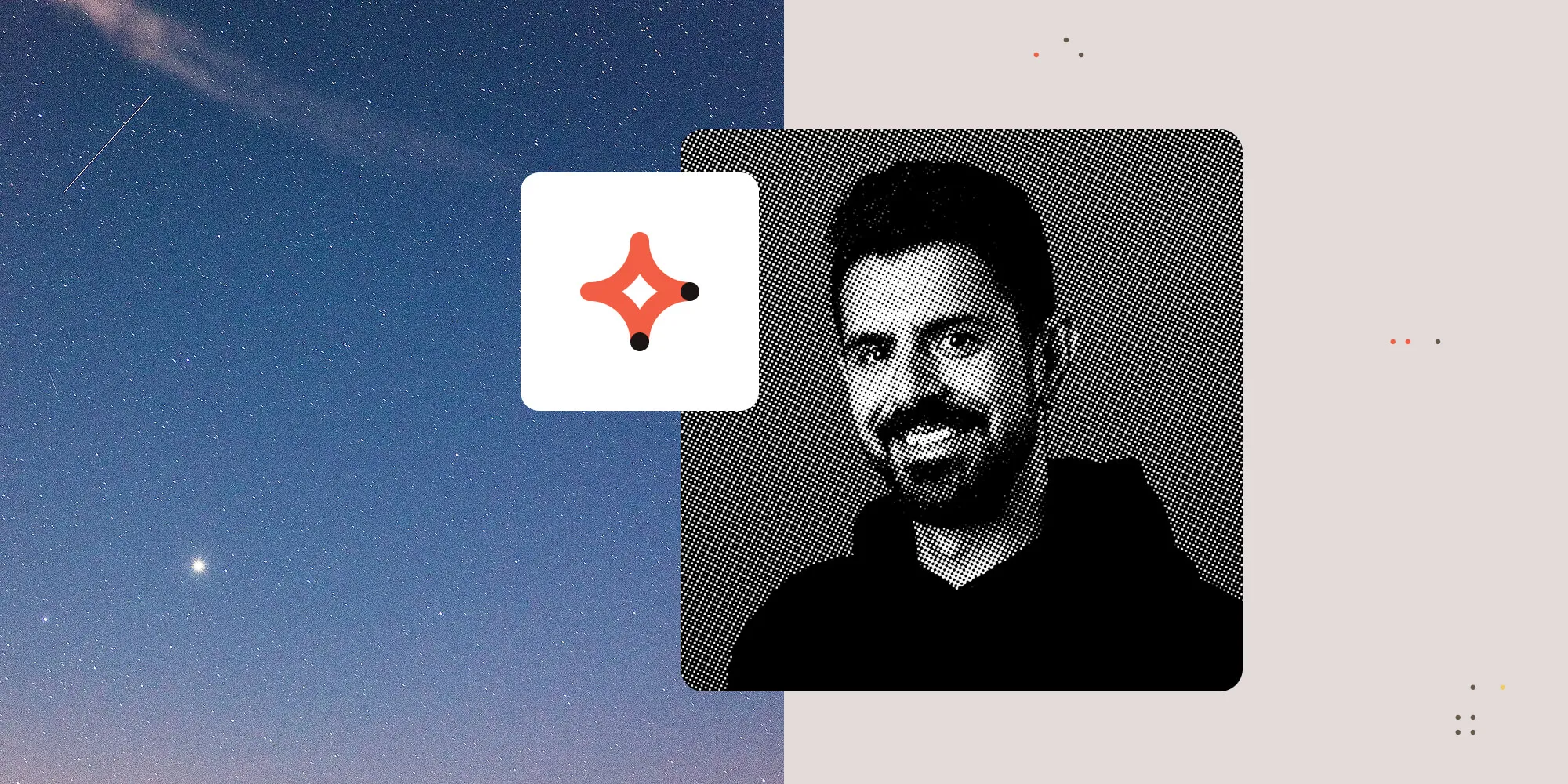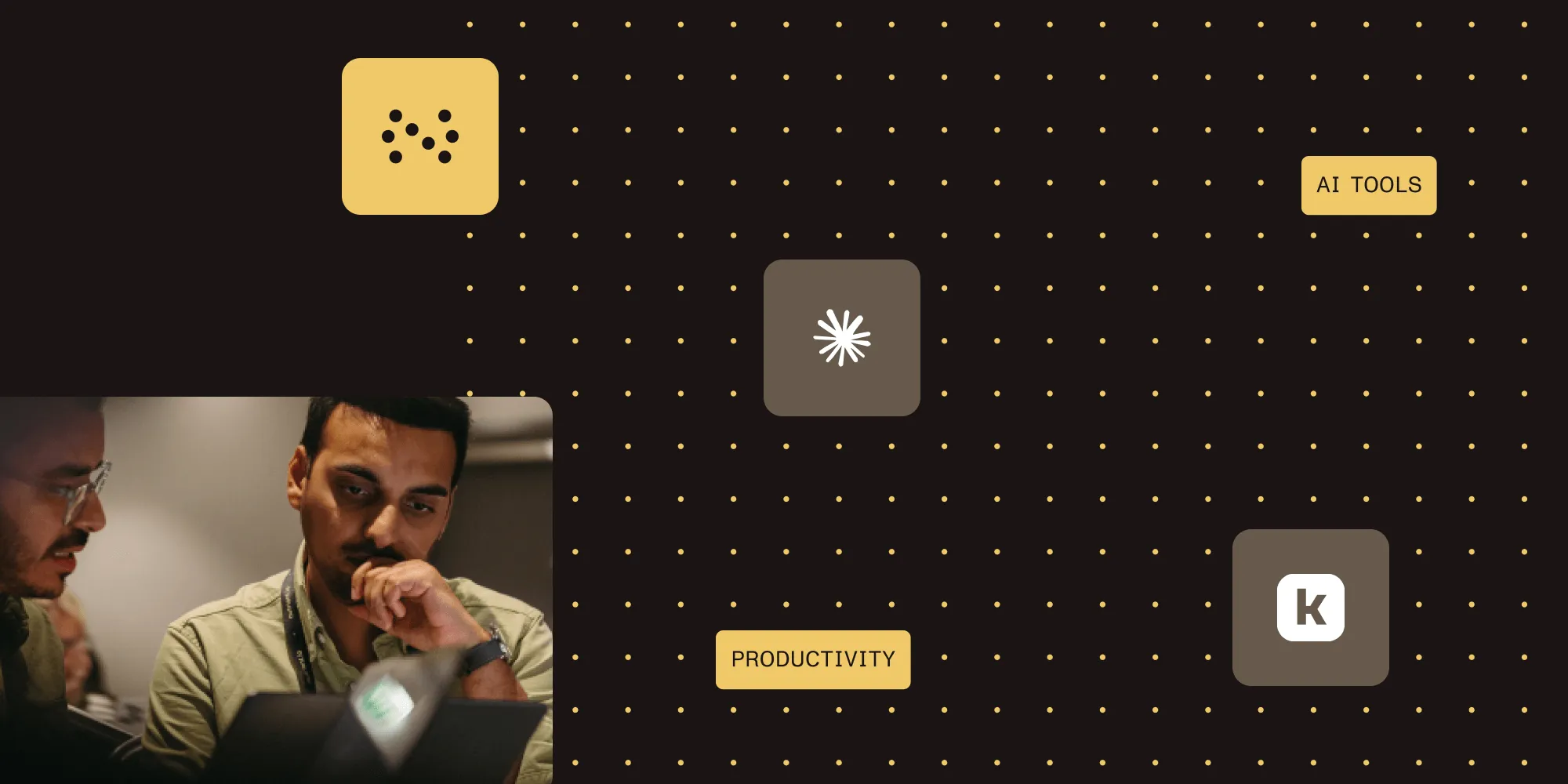How natural language interfaces will change document workflows
Table of contents

- Natural language interfaces are changing how we interact with documents
- Voice and text commands complement rather than replace traditional GUIs
- AI-powered tools like Claude Code demonstrate early agentic workflow potential
- Document processing is shifting from point-and-click to conversational interfaces
- The next frontier combines natural language with traditional interfaces for productivity
When people discuss AI in the document space, the conversation almost always centers on unstructured data extraction. While that's valuable, we're missing the bigger picture. The real shift — the one that will reshape document workflows — is humans adopting natural language as their primary interface for getting work done.
We're witnessing this shift in software engineering with tools like Claude Code and Gemini CLI. Design workflows are being built through conversational interfaces. Search has evolved from keyword matching to understanding intent. Document workflows are next.
The interface evolution we didn't see coming
Remember when graphical user interfaces (GUIs) replaced command lines? They made computers accessible to non-technical users. Now we're experiencing a similar leap — but this time, we're moving toward conversation.
Natural language interfaces don't just change how we interact with documents; they alter how we think about what we want to build, edit, or create. Instead of navigating through menus and remembering where features live, we describe our intent. "Make this contract clause more protective of our IP" becomes as straightforward as asking a colleague for help.
From headless APIs to agentic workflows
The technical infrastructure for this shift already exists. Document processing workflows that once required complex API integrations and custom UIs are now being created through Model Context Protocol (MCP) servers. Our Document Engine MCP(opens in a new tab) and DWS API MCP(opens in a new tab) aren't just tools — they're early examples of a future where document manipulation happens through conversation.
What's an MCP server? A service that provides context to large language models (LLMs) via a standardized protocol. This enables the LLMs to interface with outside data and invoke tools.
These headless document processing workflows represent more than technical innovation. They're the foundation for a new paradigm where documents become active participants in our work rather than passive containers of information.
The 75% solution
GUIs aren't disappearing. Just as software engineers still use text editors despite AI coding assistants, document professionals will continue to need visual interfaces. But natural language interfaces will handle the first 75% of most tasks.
Consider drafting a complex report. Instead of starting with a blank page, you begin with a conversation:
- "Create a quarterly sales report structure based on our Q3 data"
- "Add comparative analysis against our main competitors"
- "Include charts showing year-over-year growth in key markets"
- "Make the tone confident but acknowledge the supply chain challenges"
Within minutes, you have a professional draft that would have taken hours to create manually. The remaining 25% is where human expertise, creativity, and judgment come in — fine-tuning with traditional tools where precision matters most.
Voice changes everything
While text-based chat interfaces have dominated the AI conversation, voice commands introduce a different dynamic. Voice isn't just faster than typing; it changes how we express ourselves.
When you speak, your thoughts flow naturally. There's no pause to consider spelling or hunt for the right menu option. Tone, emphasis, and emotion add layers of meaning that text struggles to convey. A frustrated "Why isn't this formatting correctly?" gets a different response than a calm inquiry about formatting options.
This shift from pure chatbot interfaces to voice-enabled document interaction isn't science fiction — it's happening now. Engineers are dictating code changes. Designers are describing visual concepts and watching them materialize. Document workflows are next.
The melding of interfaces
The future isn't about choosing between GUIs and natural language — it's about blending them. Picture reviewing a legal document where:
Traditional GUI You see the document visually, scroll through pages, and click to add comments
Natural Language Layer You ask "What are the key liability clauses?" and get instant highlights and summaries
Voice Commands You say "Flag any non-standard indemnification terms" while reading
Hybrid Actions You select text visually, then say "Rewrite this to match our standard terms"
This isn't replacing human expertise — it's amplifying it. The paginated document canvas remains, but it's enhanced with an intelligent layer that understands context, intent, and natural language.
What this means for knowledge work
The implications extend beyond individual productivity. When document workflows become conversational:
Accessibility improves — Complex document operations become available to anyone who can describe what they want, regardless of technical skill.
Training time decreases — Instead of learning where features live in complex interfaces, users describe their goals.
Collaboration evolves — Teams can share not just documents but entire conversational workflows that others can understand and modify.
Automation becomes accessible — Creating document automation no longer requires programming skills, just clear communication of intent.
The path forward
We're at an inflection point. The technology exists. Early adopters are seeing productivity gains. The question isn't whether natural language interfaces will change document workflows — it's how quickly organizations will adapt.
For developers and product teams, this means rethinking how users interact with document functionality. Instead of adding more buttons and menus, consider how natural language could simplify complex operations.
For business leaders, it's time to evaluate where conversational interfaces could eliminate friction in document-heavy processes. Legal reviews, contract negotiations, compliance documentation — all are ready for this shift.
For end users, the message is simple: The future of document interaction is conversational, and it's arriving faster than you might think.
Getting started today
The shift doesn't require waiting for some distant future. Tools and platforms supporting natural language document interactions exist now:
- Explore MCP servers for document processing automation
- Experiment with AI assistants that understand document context
- Start simple — use voice commands for basic document operations
- Gradually expand to more complex workflows as comfort grows
The shift from pure GUI to natural language interfaces for document workflows isn't just another tech trend. It's a rethinking of how humans and documents interact. Just as it's changing coding, design, and search, natural language is set to change how we create, edit, review, and collaborate on documents.
The GUI won't disappear entirely — but it will no longer be the only option. The future of document workflows is conversational, and for those ready to embrace it, more productive.
Ready to explore how natural language interfaces can transform your document workflows? Discover how Nutrient's AI-powered solutions(opens in a new tab) are already making conversational document interaction a reality.







